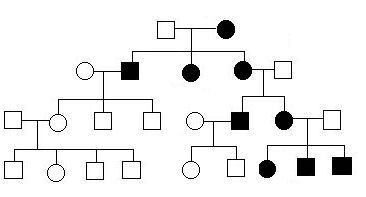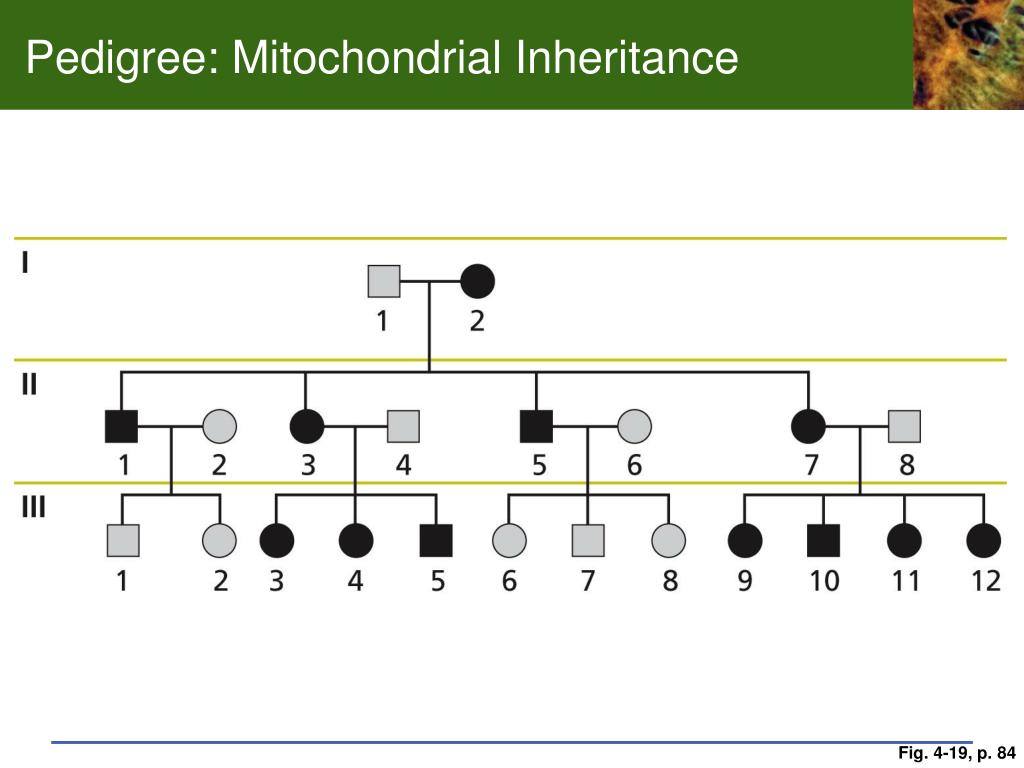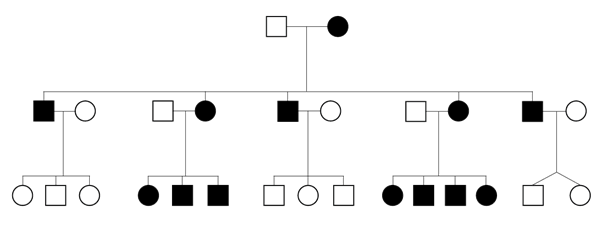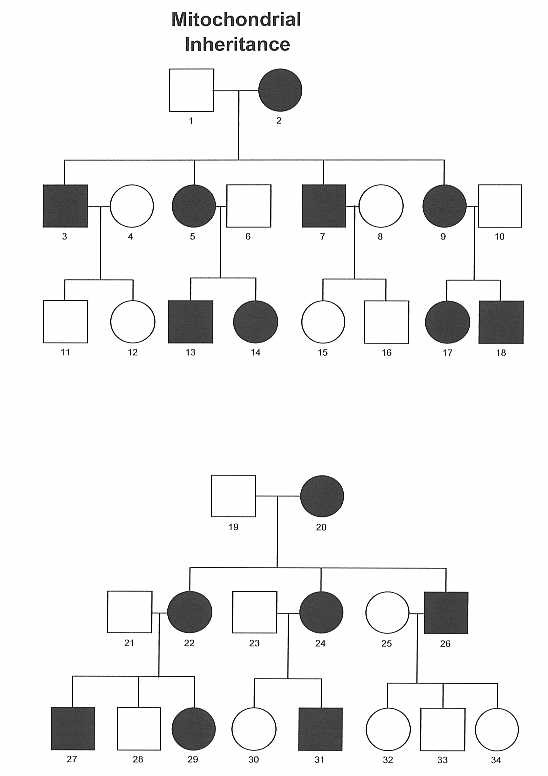A pedigree chart is a visual representation of a family’s genetic history, showing the relationships between family members and indicating the inheritance patterns of specific traits or disorders. In the context of mitochondrial inheritance, a pedigree chart can help illustrate how genetic traits are passed down through generations via the mitochondrial DNA.
These charts typically use symbols to represent different individuals in a family, with specific shapes and colors denoting different genders, relationships, and medical conditions. By analyzing a pedigree chart, genetic counselors and researchers can track the transmission of genetic traits and identify patterns of inheritance within a family.
Pedigree Chart Mitochondrial Inheritance
Understanding Mitochondrial Inheritance
Mitochondrial inheritance refers to the transmission of genetic material through the mitochondria, which are organelles within cells responsible for producing energy. Unlike nuclear DNA, which is inherited from both parents, mitochondrial DNA is passed down exclusively from the mother to her offspring.
When examining a pedigree chart for mitochondrial inheritance, researchers look for patterns of matrilineal inheritance, where traits or disorders are passed down exclusively through the maternal line. This type of inheritance can result in a wide range of genetic conditions, including mitochondrial diseases, which can impact various organ systems in the body.
Interpreting a Pedigree Chart for Mitochondrial Inheritance
When analyzing a pedigree chart for mitochondrial inheritance, researchers pay close attention to the presence of specific traits or disorders in multiple generations of the family. Traits that follow a maternal inheritance pattern, such as certain mitochondrial diseases, will typically appear in all offspring of an affected mother.
By studying the pedigree chart, researchers can uncover valuable information about the inheritance patterns of mitochondrial DNA within a family and identify individuals who may be at risk for developing genetic conditions. This knowledge can inform genetic counseling, family planning decisions, and the development of targeted treatment strategies for individuals affected by mitochondrial diseases.
Overall, understanding how to interpret a pedigree chart for mitochondrial inheritance is crucial for unraveling the complexities of genetic transmission and identifying individuals at risk for inherited conditions. By combining genetic analysis with visual representations of family history, researchers can gain valuable insights into the inheritance patterns of mitochondrial DNA and make informed decisions about patient care and family planning.
Download Pedigree Chart Mitochondrial Inheritance
Pedigrees Patterns Of Genetic Inheritance Stomp On Step1
PPT Pedigree Analysis In Human Genetics Chp 4 Human Pedigrees
An Introduction To Mitochondrial Inheritance
Mitochondrial Inheritance Michigan Genetics Resource Center




